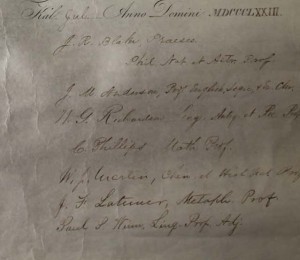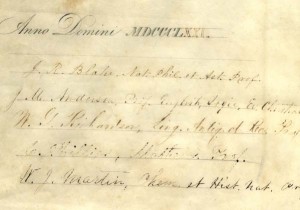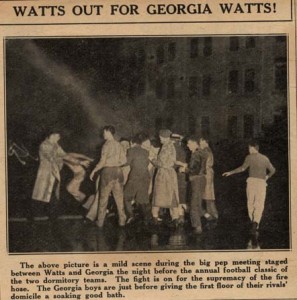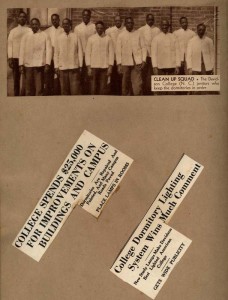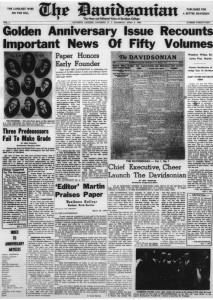The title of this post is from the Oxford Living Dictionary’s definition of astronomy, and this week, millions of people were contemplating “celestial objects.” On Monday, August 21 from 2:30 pm until 3 pm, Davidson hosted its own Eclipse Party on the Chambers lawn.
Davidson Eclipse Party brochure 2017
While Davidson did not experience a total eclipse, the moon still provided intriguing crescent-shaped shadows filtered through the trees.

Patio in front of E.H. Little Library
Thanks to Kelly Denzer, Electronic Resources Librarian, for sharing this image.
With the shifting light, several people in the crowd alluded to the variance in the shadows and the speed of those same shadows. With a little help from library resources, it was determined that in 1824, Friedrich Wilhelm Bessel introduced one of the techniques to calculate that speed and that technique is still used today.
Wondering about Davidson students and when they began studying astronomy: 1837. Astronomy was a required course and was part of the original college curriculum. In 1837, it was taught by the first President of the College, Robert Hall Morrison.







































